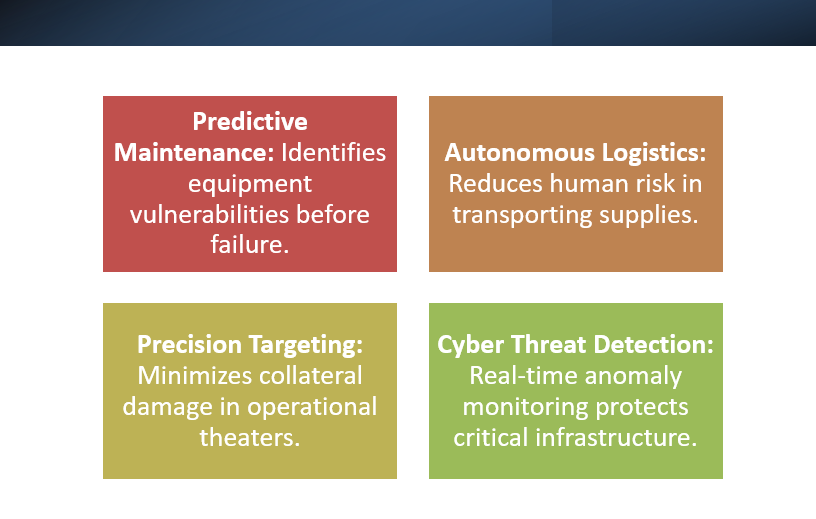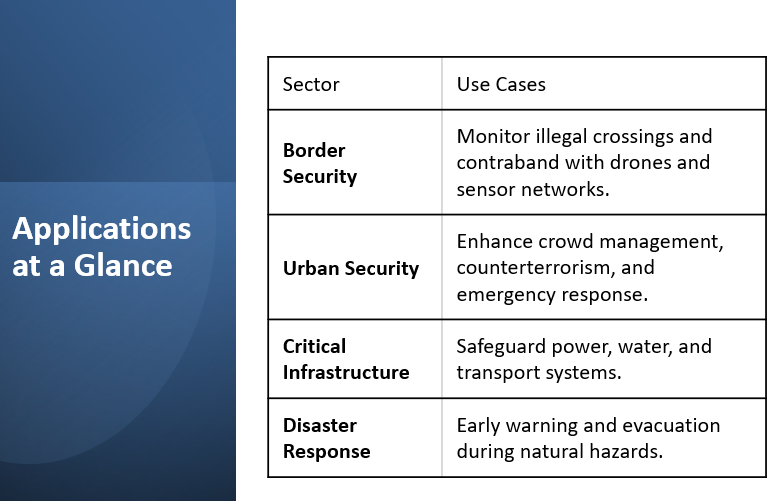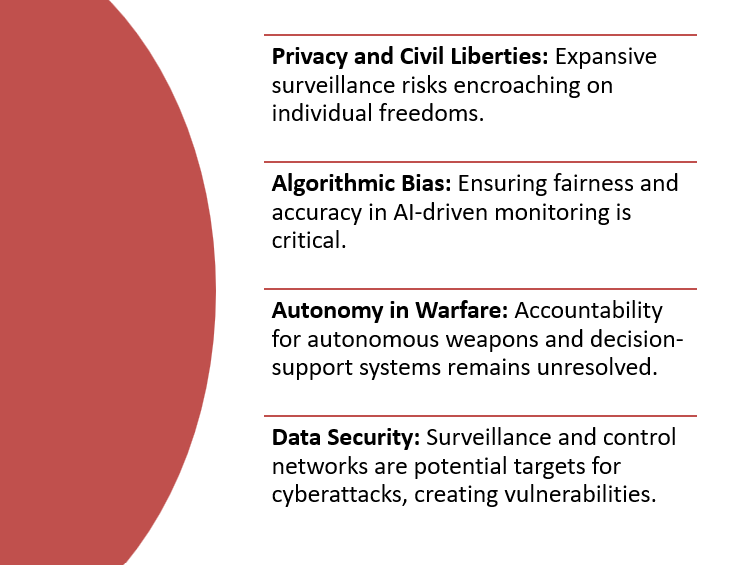Artificial Intelligence, Drones, and Defence Mechanization: An International Perspective on Modern National Security

The 21st century has ushered in a transformative era in national security, driven by the convergence of Artificial Intelligence (AI), advanced surveillance, drones, and mechanized defence systems. These technologies are reshaping how nations anticipate, respond to, and mitigate threats—from cyberattacks to regional conflicts—while presenting profound ethical, operational, and strategic challenges. Governments worldwide are now tasked with leveraging these capabilities responsibly to maintain security, resilience, and strategic advantage.
AI at the Core of Modern Security
AI Applications in Defence
AI underpins contemporary defence strategies, enhancing capabilities across intelligence, military operations, homeland security, and infrastructure protection. Its applications extend far beyond battlefield advantages, enabling systemic digital resilience, predictive analytics, and strategic foresight in complex security environments.
Cybersecurity and Digital Defence
AI-driven cybersecurity tools detect anomalies, block intrusions in real time, and secure critical national infrastructure, including power grids, communications networks, and transportation systems. Automated monitoring reduces response times and minimizes human error, forming the backbone of digital resilience in an increasingly interconnected world.
Military Applications and Mechanized Defence
Autonomous and semi-autonomous systems—including drones, robotic vehicles, and mechanized platforms—extend operational reach while reducing human risk. Precision targeting minimizes collateral damage, while predictive maintenance identifies equipment vulnerabilities before failure. Advanced mechanization improves rapid troop deployment, logistical efficiency, and battlefield adaptability.
Intelligence & Counterterrorism
Big data analytics identifies hostile networks, espionage, and disinformation campaigns.
Callout Box: AI in Action
- Predictive Maintenance: Identifies equipment vulnerabilities before failure.
- Autonomous Logistics: Reduces human risk in transporting supplies.
- Precision Targeting: Minimizes collateral damage in operational theaters.
- Cyber Threat Detection: Real-time anomaly monitoring protects critical infrastructure.

Advanced Surveillance & Monitoring
Surveillance technologies, integrated with AI, IoT networks, drones, and satellite imagery, create multi-layered situational awareness critical for modern defence.
Drones and Unmanned Systems
Drones have become integral to modern defence, enabling persistent surveillance, rapid reconnaissance, and targeted operations. Coordinated fleets of AI-enabled drones—often operating in swarms—enhance monitoring of borders, critical infrastructure, and contested regions, while supporting disaster relief and humanitarian missions.
Intelligence and Counterterrorism
AI enables real-time analysis of large datasets from communications, financial transactions, and surveillance networks. Pattern recognition allows the detection of hostile networks, espionage, and disinformation campaigns, supporting proactive intelligence operations and counterterrorism strategies.
Border Security and Homeland Protection
AI-powered drones, smart sensors, and biometric systems reinforce border security, streamline identity verification, and facilitate disaster response through predictive modeling. These tools enhance situational awareness while ensuring efficient deployment of resources during crises.
Core Capabilities
- Facial and Object Recognition: Identifies persons or objects of interest across high-traffic or sensitive areas.
- Behavioral and Anomaly Detection: Flags unusual activity near infrastructure or in cyber networks.
- IoT and Smart Sensors: Provides real-time monitoring of borders, cities, and environmental hazards.
- Satellite and Drone Surveillance: Offers persistent coverage of remote, contested, or strategic regions.
- Geospatial Intelligence (GEOINT): Integrates multi-source data for strategic planning and rapid crisis response.
Key Applications

Ethical and Strategic Considerations
The integration of AI, drones, and mechanized systems raises important ethical and operational concerns:

Future Directions
Emerging trends are reshaping the AI-defence-mechanization nexus:
- Quantum AI: Combines AI with quantum computing to enhance cryptography, real-time analysis, and data processing.
- Swarm Drones: Coordinated drone fleets revolutionize surveillance, border control, and disaster relief operations.
- Integrated Decision Frameworks: Unified AI platforms merge insights from surveillance, mechanized operations, and intelligence databases.
- International Governance: Multilateral norms and regulations are essential to ensure the responsible use of AI and autonomous systems in defence.
- Human-AI Collaboration: Maintaining human oversight ensures accountability, ethical compliance, and informed decision-making.
Strategic Takeaways

Conclusion
AI, drones, and mechanized defence systems have become inseparable from modern national security strategies. Their integration enables nations to respond effectively to conventional and unconventional threats while supporting intelligence, surveillance, and humanitarian missions. Yet, these technologies present significant ethical, operational, and strategic challenges. The future balance of global security will depend not only on technological mastery but also on responsible governance, international cooperation, and the preservation of human judgment in critical security decisions.
Engr. Johnny Shahinur Alam
Technologist and ICT & Digital Transformation Specialist

